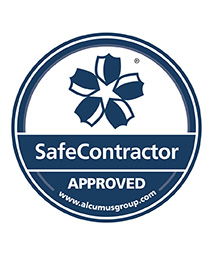What are pressure ulcers?
Pressure ulcers – also referred to as pressure damage, pressure injuries, bedsores or decubitus ulcers – are usually seen on the skin as red, purple or discoloured areas, which may progress into blistering or open wounds. These can develop on bony areas of the body such as the back, bottom or heels or in areas where the blood supply to the tissues has been reduced due to prolonged pressure.
They can happen to anyone, but usually affect people who spend more time in bed or those who sit in a chair or wheelchair for long periods of time. If you are at risk of pressure damage you should be offered advice on how to reduce your risk and this will usually include information on:
- How to assess your skin for early signs of damage
- What type of mattresses, cushions or special devices may help to relieve pressure from vulnerable areas
- How to keep moving. Even small changes in position are really important to reduce the risk of damage
- If you have problems with your bladder or bowels that mean that your skin is wet or soiled, there may be creams and products that will help to prevent skin damage
- How to make sure that you eat a healthy diet and take sufficient fluid to keep the skin nourished and hydrated.
While pressure ulcers can appear anywhere on the body, they are most commonly seen over bony areas such as the heels, ankles, hips, spine and buttocks.
Why do pressure ulcers develop?
Pressure ulcers form when blood flow to the tissues of the skin and surrounding area is reduced.
Capillaries are the smallest blood vessels. They bring oxygenated blood from the arteries into the organs, skin and underlying tissue, as well as taking deoxygenated blood away from the skin and tissues back into the veins.
When a person is sitting or lying on a surface the pressure between the seat/mattress and the body compresses the capillaries in this area. This is especially noticeable over bony areas, like your heels, buttocks and tailbone (coccyx). Just like squeezing a hosepipe if this pressure is high enough it can reduce blood flow through these capillaries or even stop it altogether.
Pressure is not the only issue. Shear forces (such as sliding down the bed or slouching in a chair) also play a part in the development of pressure.
For more information on these forces, see our article Shear and Friction in Pressure Ulcer Development.
How do we naturally prevent pressure ulcers?
If someone’s blood vessels are closed or compressed due to pressure, then the oxygen supply to the surrounding tissues falls.
Interestingly, in healthy people, this fall in oxygen prompts a reflex to move; this is the reason you cross and uncross your legs or roll over in bed at night without really thinking about it! Ignore this reflex and you will start to feel pain and discomfort, a sign from your body that it’s time to get moving again.
If the pressure is relieved, and the circulation is restored, the capillaries open up again and blood flow increases to the area again. For those with pale skin, this may be observed as the pink patch that is visible if you have had your legs crossed for a sustained period. This pink patch is called ‘blanching erythema’. Blanching erythema is identifiable by the pale spot you can see when you press on it with a finger on Caucasian skin. In dark skin tones, this may not be visible, therefore when checking the skin, any change in skin colour or appearance should be checked carefully in case it is a sign of increased vulnerability.
To see strategies to support pressure ulcer prevention click here.
What happens if the skin remains under pressure?
If pressure continues, then reduced oxygen levels starts to cause damage to the capillaries and surrounding cells.
The first sign in the skin is often a change in colour. For those with light skin tones, non-blanching erythema may be visible, where the skin colour is a persistent red and the skin colour does not change when lightly pressed with a finger.
For those with dark skin tones, a change in skin colour may be observed, but is unlikely to present as redness. It is therefore important to compare any changes in colour observed with areas of unaffected skin to determine if early signs of pressure damage are developing.
It is also important to understand that damage may occur deep within the tissues, presenting as a Deep Tissue Injury. This may present as a purple or dark discoloured area, a thin blistered area over an area of dark discolouration or an area of thin dark eschar. The affected area may be painful and may be harder or softer, or warmer or sometimes cooler than the surrounding areas.
For more information about Harvest Healthcare please click here
For more news please visit our Twitter
Or follow us on LinkedIn


